Faculty Research Mentors
OHSU PROPEL has many faculty supporters across departments who may be able to host a scholar for their year-long research placement. To inquire if OHSU research faculty are hiring for Research Assistants, we encourage prospective PROPEL applicants to contact faculty directly.
Note: Faculty were asked to specify the graduate program they are most affiliated with (which is listed in each profile section). However, many of our faculty are affiliated with several graduate programs at OHSU.
You can find out about additional researchers by exploring the Labs at OHSU website.
We have eight faculty mentors participating in PROPEL this year.
Megan Burger

Assistant Professor | Program in Biomedical Sciences
T cells are the stars of your immune system, playing a central role in protecting you from viral and bacterial infections. It turns out T cells can similarly fight cancer, but it’s a harder fight, and they often don’t succeed in preventing cancer growth. The Burger lab is focused on understanding why T cells struggle to control cancer and finding ways to boost T cell function with cancer therapies. Specifically, we use genetically engineered mouse models of lung cancer to uncover factors regulating T cell responses and preclinically test therapeutic approaches that may benefit human patients. Burger lab website
Rose Hill

Assistant Professor | Neuroscience Graduate Program
We seek to understand mechanisms of nervous system-organ crosstalk. While we are aware of a few conscious sensations in our internal organs, such as a full bladder or a painful stomach cramp, internally innervating sensory neurons perform unconscious roles in regulating physiology that are increasingly appreciated. We know that ascending sensory input triggers descending neuronal and hormonal outputs – that is, sensory neurons perform “non-sensory” roles. By merging our expertise in neuroscience and physiology, we aim to understand how these systems cooperate to maintain homeostasis and conflict to drive pain and inflammation. Hill lab website
Ian Martin

Assistant Professor | Program in Biomedical Sciences
Research in my laboratory focuses on two main areas: First, how mutations in the LRRK2 (leucine-rich repeat kinase 2) gene promote Parkinson’s disease neurodegeneration through altered LRRK2 kinase activity. Second, how gene-environment interactions act as a pivotal determinant of neurodegeneration following exposure to certain environmental neurotoxins such as pesticides. For each area, my laboratory utilizes a combination of in vitro biochemistry, Drosophila and rodent animal models and a wide array of molecular biology, imaging and behavioral approaches that we have acquired deep expertise in. Martin lab website
Kelly Monk
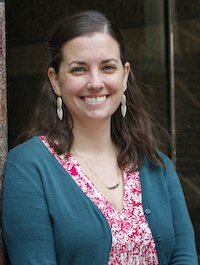
Professor | Neuroscience Graduate Program
The Monk lab studies diverse non-neuronal cells in the nervous system called glia. Although historically understudied compared to neurons, glia are critical regulators of every major aspect of nervous system biology. Using zebrafish as a discovery platform coupled with synergistic approaches in mouse, our group is answering key questions in glial cell biology including: How do glia acquire the complex morphologies that enable their functions? What molecules are used for proper axon-glial, glial-glial, and glial-vasculature communication? How do glia use these mechanisms to control neural circuit function and ultimately animal behavior? Answers to these questions will help us better understand how the brain works and to lay the foundation for new therapeutic approaches in neurological disease. Monk lab website
Angelica Morales
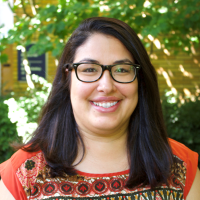
Assistant Professor | Clinical Psychology
Joshua Moreau
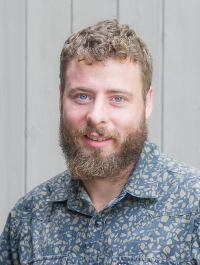
Assistant Professor | Program in Biomedical Sciences
The Moreau lab is focused on the biology of tissue-resident lymphocytes and their role in cancer development. We’re looking at:
- Tissue-resident B cells.
- Inflammatory skin disease and cancer.
- Harnessing tissue-specific immune function to develop new immunotherapeutic and cancer detection tools
Bret Pearson
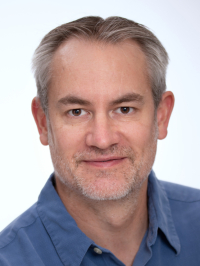
Professor | Neuroscience Graduate Program
We use the freshwater planarian (Schmidtea mediterranea) and zebrafish (Danio rerio) as model organisms to study how adult stem cells make their precise cellular lineages during neural regeneration following acute injury. We also study how this biology becomes dysregulated during the formation of brain cancers such as glioblastoma multiforme. Our overarching goal is to understand the basic biology and molecular mechanisms of neural regeneration at a single-cell level. Pearson lab website
Pepper Schedin

Professor | Program in Biomedical Sciences
The Schedin lab investigates how normal reproductive biology defines windows of risk for breast cancer, with a focus on stromal-epithelial interactions. Our lab is at the forefront of investigations focused on understanding how the breast microenvironment changes with reproductive state, and have shown that mammary stroma is highly plastic, remodeling in response to various physiologic signals including pregnancy, lactation and weaning. We have found that the inherent plasticity of normal breast stroma contributes significantly to breast cancer risk and survival outcomes in young women, but also reveals new understanding for life-cycle specific breast cancer prevention and treatment strategies. Schedin lab website
These participating faculty have hosted PREP and/or PROPEL scholars or have expressed interest in hosting a postbac scholar in the future. To determine whether OHSU research faculty are hiring Research Assistants, we encourage prospective PROPEL applicants to contact faculty directly.
Visit our FAQ page to learn more about finding a research mentor.
Note: Faculty were asked to specify the graduate program they are most affiliated with (which is listed in each profile section). However, many of our faculty are affiliated with several graduate programs at OHSU.
Sudarshan Anand
Associate Professor | Program in Biomedical Sciences
“Giving cancer the flu” Strategies to manipulate the tumor immune microenvironment including antibodies targeting immune checkpoints have revolutionized cancer treatment. However, many tumors are immunologically ‘cold’ thereby escaping these immunotherapies. ‘Tricks and tips’ from viruses/bacteria or autoimmune disease have yielded many approaches to enhance immune recognition of tumors. We found that an RNA sensing pathway, Retinoic acid Induced Gene 1 (RIG-I) that serves as a receptor for viral RNA, can be adopted as a robust immune activator across cancer types A few questions we are investigating currently What cell types in the tumor benefit from RIG activation - the tumor cells or immune cells? What makes some tumors sensitive or resistant to RIG activation? Can we develop small molecule modulators of RIG-I function? Anand lab website
Sarah Andres

Assistant Professor | Program in Biomedical Sciences
The Andres Lab specializes in cellular physiology of health and disease within the gastrointestinal tract, with a particular interest in cellularcommunication. Our work is centered on post-transcriptional regulation of intestinal physiology via the RNA binding protein IMP1 and the role ofextracellular vesicles (EVs) as carriers of information into and throughout the human body. Our projects examine roles for IMP1 and EVs in development,inflammation, and cancer. Andres lab website
Megan Burger

Assistant Professor | Program in Biomedical Sciences
T cells are the stars of your immune system, playing a central role in protecting you from viral and bacterial infections. It turns out T cells can similarly fight cancer, but it’s a harder fight, and they often don’t succeed in preventing cancer growth. The Burger lab is focused on understanding why T cells struggle to control cancer and finding ways to boost T cell function with cancer therapies. Specifically, we use genetically engineered mouse models of lung cancer to uncover factors regulating T cell responses and preclinically test therapeutic approaches that may benefit human patients. Burger lab website
Michael Cohen
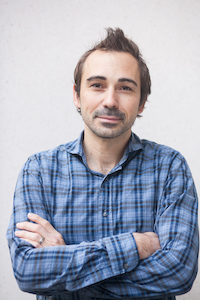
Associate Professor | Program in Biomedical Sciences
A major focus of the Cohen lab is on the evolutionarily conserved post-translational modification, ADP-ribosylation. ADP-ribosylation is catalyzed by afamily of enzymes known as PARPs (17 family members in humans) using NAD+ as a substrate. PARPs catalyze the transfer of ADP-ribosefrom NAD+ to amino acids in target proteins. We have developed enabling chemical tools and approaches to study PARPs and NAD+; theseinclude orthogonal, clickable NAD+ analogengineered enzyme pairs, selective PARP inhibitors, and NAD+ biosensors. These tools andapproaches have provided insights into the cellular function of PARPs and NAD+ in ways not attainable with conventional methods. Cohen lab website
Ben Emery

Associate Professor | Neuroscience Graduate Program
The Emery lab seeks to uncover the molecular and cellular mechanisms controlling myelination in the CNS. In particular, we are interested in the genetic pathways that regulate the generation of oligodendrocytes and their subsequent myelination of axons. We also seek to understand how neurons and oligodendrocytes interact to ultimately determine which axons are myelinated. Finally, we aim to understand how loss of myelin impacts neuronal health and how to promote myelin repair in demyelinating disease (remyelination). Our lab uses a range of techniques including genetically modified mouse models, tissue culture, genome-wide sequencing and viral approaches to address these questions. Emery lab website
James Frank
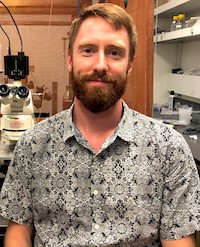
Assistant Professor | Neuroscience Graduate Program
The Frank lab studies cannabinoid receptors and how they are activated by their endogenous lipid ligands to affect biomolecule secretion in thebrain and in the pancreas. The lab synthesizes and evaluates new small molecule-based light-activatable tools using chemistry, molecularbiology, imaging, whole-cell electrophysiology, and in vivo behavioral experiments. Frank lab website
Beth Habecker

Professor | Program in Biomedical Sciences
The Habecker Lab explores the intersection of neuroscience and cardiovascular science in order to discover new insights into how the body works and develop new ways to treat disease. We are trying to understand how neuron-heart interactions during injury and disease contribute to negative outcomes and are asking if we can fix nerves to prevent cardiac damage. Habecker lab website
Laura Heiser
Associate Professor | Biomedical Engineering
My laboratory is focused on understanding the phenotypic and molecular responses of cancer and normal cells to diverse stimuli including small molecule inhibitors and growth factors. We use a variety of novel imaging-based and molecular techniques to assess dynamic changes in single cells, and have a particular interest in elucidating mechanisms of therapeutic response and resistance in cancer. We use well-integrated computational and experimental techniques with a key goal of closing the gap between these approaches. My experimental expertise is in the analysis of high-throughput profiling data, including next-generation sequencing, high-throughput functional assays, and imaging assays. Heiser lab website
Monica Hinds

Professor | Biomedical Engineering
The Hinds lab focuses on understanding and interceding in progression of cardiovascular diseases. Our team studies ways to engineer biomaterials to promote healing and the impact of fluid flow on vascular cells. The lab utilizes in vitro mechanistic studies with cultured cells and blood components, ex vivo experimentation with whole blood, and in vivo animal studies. Members of our lab have diverse academic backgrounds including engineering, biology, chemistry, medicine, and materials science. Our broad approach to understanding the cardiovascular system allows our team numerous opportunities to apply basic science and engineering principles to understand and treat cardiovascular diseases. Hinds lab website
Rebekah Huber

Research Associate Professor | Clinical Psychology
The Huber lab investigates cognitive and biological factors contributing to suicide risk in youth with mood disorders. Our research aims to identify modifiable risk factors to develop novel evidence-based interventions and prevention strategies designed to mitigate suicide risk and enhance the quality of life for youth living with mood disorders. Furthermore, we strive to translate these interventions into clinical practice on a larger scale to maximize their impact on the community. Center for Mental Health Innovation website
Jeanette "Jeni" Johnstone

Associate Professor | Clinical Psychology
The Science of Nutrition Affect and Cognition in Kids (SNACK) Lab studies complementary and integrative interventions (micronutrients [vitamins/minerals], mindfulness) for mental health concerns including ADHD, emotional dysregulation, mood, anxiety and stress. We are examining the biomarkers of micronutrient response, including the microbiome and its metabolites, neurotransmitter concentrations in urine and plasma, stress-related hormones and cytokines, and genetic factors. In 2024, we are starting a new NIH clinical trial in racially and ethnically diverse participants, with a focus on Black and Latino/a families in Portland, using micronutrients. We are particularly looking for individuals that identify as BIPOC and/or speak Spanish. The cross-disciplinary team (psychologist, nutritionist, naturopath, psychiatrist, and epidemiologist) works together to conduct quantitative and qualitative research. SNACK lab website
Kate Keller
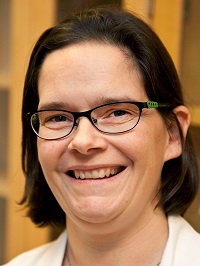
Professor | Program in Biomedical Sciences
My laboratory investigates the cell biology of glaucoma, a common disease that causes irreversible blindness. Glaucoma is frequently associated with elevated intraocular pressure, which is caused by decreased aqueous humor outflow through the trabecular meshwork (TM) tissue. We have identified extracellular matrix molecules that contribute to intraocular pressure regulation, how TM cells respond to elevated pressure, and the biological function of glaucoma-causing genes. Our current work is on specialized actin-based tunneling nanotubes, which transport signals directly between TM cells. Using live-cell imaging, we show that TNTs formed by glaucomatous TM cells have different phenotypic characteristics than normal TM cells, which affects their cellular communication. Kate Keller profile
Jennifer Loftis

Professor | Clinical Psychology
The Loftis laboratory is focused on investigating the psychoneuroimmunological mechanisms contributing to substance use disorders, cognitive impairment, and mood disorders. We conduct preclinical studies using animal models and clinical studies to characterize the inflammatory pathways contributing to cognitive dysfunction, depression, and anxiety, particularly in individuals with a history of substance use disorders (e.g., methamphetamine, alcohol) and viral infection [e.g., hepatitis C virus (HCV), severe acute respiratory syndrome coronavirus 2 (SARS-CoV-2)]. A major goal of this translational work is to develop and test anti-inflammatory interventions that can treat impairments in neuropsychiatric function and improve recovery outcomes and quality of life. Psychoneuroimmunology lab website
Ian Martin

Assistant Professor | Program in Biomedical Sciences
Research in my laboratory focuses on two main areas: First, how mutations in the LRRK2 (leucine-rich repeat kinase 2) gene promote Parkinson’s disease neurodegeneration through altered LRRK2 kinase activity. Second, how gene-environment interactions act as a pivotal determinant of neurodegeneration following exposure to certain environmental neurotoxins such as pesticides. For each area, my laboratory utilizes a combination of in vitro biochemistry, Drosophila and rodent animal models and a wide array of molecular biology, imaging and behavioral approaches that we have acquired deep expertise in. Martin lab website
Kelly Monk

Professor | Neuroscience Graduate Program
The Monk lab studies diverse non-neuronal cells in the nervous system called glia. Although historically understudied compared to neurons, glia are critical regulators of every major aspect of nervous system biology. Using zebrafish as a discovery platform coupled with synergistic approaches in mouse, our group is answering key questions in glial cell biology including: How do glia acquire the complex morphologies that enable their functions? What molecules are used for proper axon-glial, glial-glial, and glial-vasculature communication? How do glia use these mechanisms to control neural circuit function and ultimately animal behavior? Answers to these questions will help us better understand how the brain works and to lay the foundation for new therapeutic approaches in neurological disease. Monk lab website
Karina Nakayama
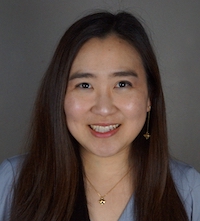
Assistant Professor | Biomedical Engineering
The overarching scientific mission of the Nakayama group is to develop therapeutic treatments for traumatic musculoskeletal injuries using regenerative bioengineering strategies. The three areas of focus that frame my research program are: 1) biomaterial and cell-based therapies to treat critically sized muscle and bone defects; 2) rehabilitation engineering to improve function following traumatic lower extremity injuries; 3) material-driven immunomodulation of the musculoskeletal regenerative niche. Specifically, our group modulates extracellular environments using biomaterials and rehabilitation exercise to stimulate regenerative programs in damaged tissues. Our recent efforts have focused on bridging the gap in the clinical management of complex musculoskeletal extremity trauma. Nakayama lab website
Tim Nice
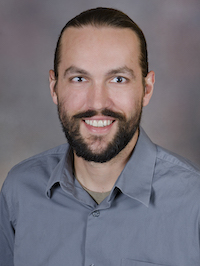
Associate Professor | Program in Biomedical Sciences
Mucosal surfaces are constantly exposed to the environment and therefore represent a front-line in protection against viral infection. Similarly, mucosal surfaces are key sites of viral shedding and transmission. The intestine is the largest mucosal surface and must balance its role in nutrient uptake with its role as an immunological barrier. We study the biology of the intestinal cells and cytokines – how they promote health and resistance to infection. We use the mouse model of persistent norovirus infection and organoid cultures from subjects with intestinal disease to understand how immune pathways function and how they become dysfunctional in disease states. Nice lab website
Brian O'Roak

Associate Professor | Neuroscience Graduate Program
Defining the molecular mechanisms that underlie autism requires not only identification of critical genetic risk factors, but also understanding how they interact within a complex and developing system. I believe we need to shift our focus to a new paradigm that incorporates many different patient-specific mutations in a multitude of models with complementary strengths and weaknesses. Advances in genome editing, induced pluripotent stem cells (iPSCs), neurogenetics, and functional genomics have made this patient-specific approach feasible. Furthermore, focusing on mutations in genes that are master regulators of key biologic networks provides an avenue for reducing the phenotypic complexity of autism, biomarker discovery, and targeted personalized therapies that will have impact beyond a single risk gene. O'Roak lab website
Bret Pearson

Professor | Neuroscience Graduate Program
We use the freshwater planarian (Schmidtea mediterranea) and zebrafish (Danio rerio) as model organisms to study how adult stem cells make their precise cellular lineages during neural regeneration following acute injury. We also study how this biology becomes dysregulated during the formation of brain cancers such as glioblastoma multiforme. Our overarching goal is to understand the basic biology and molecular mechanisms of neural regeneration at a single-cell level. Pearson lab website
Jonathan Pruneda
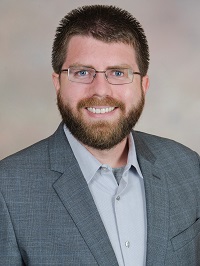
Assistant Professor | Program in Biomedical Sciences
Our immune system relies upon rapid and robust signaling responses to the detection of an invading pathogen. In these signaling pathways, information is relayed through post-translational modifications such as protein ubiquitination. Unfortunately for us, many pathogens have the remarkable ability to subvert host signaling responses and thus evade detection. Work in our lab focuses on the mechanisms by which pathogens manipulate the host ubiquitin signaling response. We use biochemical and structural biology techniques to understand the molecular details of these host-pathogen interactions, with the goal of learning more about the requirements for infection and immunity. Pruneda lab website
Isabella Rauch

Assistant Professor | Program in Biomedical Sciences
Rauch lab research aims to understand how mammalian barrier tissues such as the intestine or the reproductive tract distinguish between harmless and dangerous microorganisms, and what happens during infection of epithelial cells at these tissues. The reaction of an epithelial cell to pathogen assault represents the first decision of the ensuing immune reaction, and understanding these processes will help us to better treat infections and chronic inflammatory diseases. We use various mouse models of infection in our research. In addition, stem cell derived organoids from mice and humans allow us to model and study epithelial infections in a dish. Rauch lab website
Lina Reiss

Associate Professor | Behavioral and Systems Neuroscience
We conduct research related to hearing - auditory perception and cochlear implants. We focus on two areas: 1) how binaural integration differs in people with hearing loss and hearing devices like cochlear implants, and how these differences affect the ability to segregate (and understand) speech in background noise; 2) how pitch perception differs with cochlear implants, particularly the weighting of cochlear place versus temporal envelope cues. We study these questions mainly in human subjects with normal hearing and hearing loss using psychophysics/behavior, non-invasive electrophysiological measures using the cochlear implant to record neural signals, and computational modeling. Cochlear Implant Hearing Aid Research lab website
Lauren Rodda

Assistant Professor | Program in Biomedical Sciences
The Rodda lab studies how tissue resident memory B cells and plasma cells enhance protection from mucosal pathogens, especially evolving variants, and may reduce transmission. In particular, we focus on understanding the regulated interactions between these cells and their respiratory tract niches that enable rapid control of respiratory infections including RSV, SARS-CoV-2 and influenza without causing damaging inflammation such as in asthma and idiopathic pulmonary fibrosis. We study these critical interactions in mouse models and in a translational program by leveraging antigen-specific flow cytometry, high-parameter microscopy and transcriptomics. Our work will help design vaccines that induce protection that is durable and effective against variants and reveal new therapeutic targets for regulating tissue lymphocytes in lung pathologies. Rodda lab website
Sandra Rugonyi

Professor | Biomedical Engineering
We study embryonic heart development and how abnormal blood flow conditions (due to environmental stressors) lead to congenital heart disease, which affects 1% of newborns. To this end, we use chicken embryo models because they are easy to access while developmental processes are conserved among vertebrate species. Chicken embryos, moreover, replicate heart defects in human newborns with congenital heart disease. For our studies, we use a combination of engineering and biological techniques, including development of computational models. Rugonyi lab website
Arpiar Saunders
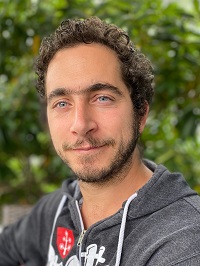
Assistant Professor | Neuroscience Graduate Program
Our aims in research are to understand 1) how genetic variation influences the cellular organization of neural circuits and how 2) viruses interact with host brain cell types. Our approach is primarily focused on using single-cell, single-virion genomic to generate comprehensive and high-throughput datasets. Saunders lab website
Pepper Schedin

Professor | Program in Biomedical Sciences
The Schedin lab investigates how normal reproductive biology defines windows of risk for breast cancer, with a focus on stromal-epithelial interactions. Our lab is at the forefront of investigations focused on understanding how the breast microenvironment changes with reproductive state, and have shown that mammary stroma is highly plastic, remodeling in response to various physiologic signals including pregnancy, lactation and weaning. We have found that the inherent plasticity of normal breast stroma contributes significantly to breast cancer risk and survival outcomes in young women, but also reveals new understanding for life-cycle specific breast cancer prevention and treatment strategies. Schedin lab website
Elinor Sullivan

Associate Professor | Clinical Psychology
The overarching research goal of the laboratory is to understand the influence of early environmental factors such as maternal nutrition, stress, and mental health during gestation on offspring neurobehavioral regulation. The primary focus is the identification of early environmental risk and protective factors for neurodevelopmental disorders including autism spectrum disorders (ASDs), attention deficit hyperactivity disorder (ADHD), anxiety, and depression in order to inform the design of prevention strategies and early interventions. One specific focus is the impact of exposure to maternal obesity and poor nutrition during the perinatal period on the behavior, and physiology of the developing offspring. Prenatal Environment and Child Health lab website
Vivek Unni

Associate Professor | Neuroscience Graduate Program
My lab is interested in the protein alpha-synuclein, including its normal and pathologic functions related to diseases like Parkinson’s Disease(PD), Lewy Body Dementia (LBD), and the skin cancer melanoma. We use in vivo multiphoton imaging approaches to study the aggregation ofalpha-synuclein in mouse models of PD and LBD, and a variety of techniques to study the novel hypothesis, developed by our group, thatalpha-synuclein plays unexpected roles in the cell nucleus in DNA repair in neurons and melanoma cells. Unni lab website
Gary Westbrook

Professor | Neuroscience Graduate Program
Researchers in the Westbrook Lab would like to understand how synapses and small circuits do their work. Our earlier work was mostly directed at the level of receptors, particularly N-methyl-D-aspartate (NMDA) receptors, and the function of single synapses. Our efforts have now largely shifted to studies of small networks (microcircuits) in the hippocampus. Our goal is to understand how such circuits are formed, regulate their activity and contribute to the function of neural systems. Westbrook lab website
Anna Wilson
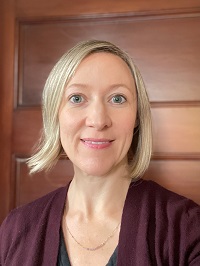
Associate Professor | Clinical Psychology
The Advancing Research in Pediatric Pain Lab studies novel models of risk for pain in children and families, with the goal of identifying medical system and psychosocial targets for prevention of chronic pain problems. We assess pain via patient-reported outcomes, lab-based pain testing, and neuroimaging approaches. Our work focuses on family factors, intergenerational risk for pain, and pain and prescription opioid use in adolescents and young adults in the context of acute and chronic pain experiences. Advncing Research Pediatric Pain lab website
Kevin Wright
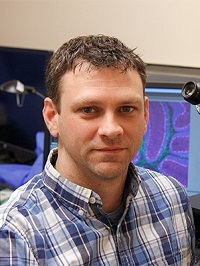
Associate Professor | Neuroscience Graduate Program
Our lab is interested in how the nervous system is assembled, and how this process goes wrong in neurodevelopmental disorders. We use mouse genetic approaches to study neuronal specification, migration, axon guidance, and synaptogenesis. Current projects involve identifying the molecular pathways required for generating diverse subtypes of neurons with unique molecular, morphological, and physiological properties in the retina and dorsal root ganglia. We are also investigating how the transmembrane protein Dystroglycan regulates inhibitory synapse formation and maintenance in the brain of mouse models of dystroglycanopathy, a form of congenital muscular dystrophy that is accompanied by a range of neurological defects. Wright lab website
Daniel Zuckerman
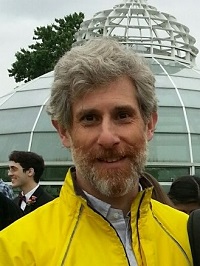
Professor | Biomedical Engineering
How do molecular machines really work? And can we predict future cell behavior based on sparse information of the past? The Zuckerman group uses physics-based computations to study biological phenomena ranging from molecular to cell scale. At the molecular scale, we use principles of dynamical trajectories to design better methods applicable for drug design; yet the same ideas can be used to help understand the behaviors of cells, for instance in tumor environments. We also use statistical inference to determine mechanisms of molecular machines such as transporters in a quantitative manner. An overarching challenge of the modern era of data-intensive biology is the generation of understandable, mechanistic models based on experimental data, and we are actively working in this area using innovative methods. The group is funded both by NIH and NSF. Zuckerman lab website
Our program also has a number of faculty who will join us throughout the year assisting in several professional development programming (i.e. understanding academic culture, grad application preparation, developing research methods, and creating a professional/scientific identity).